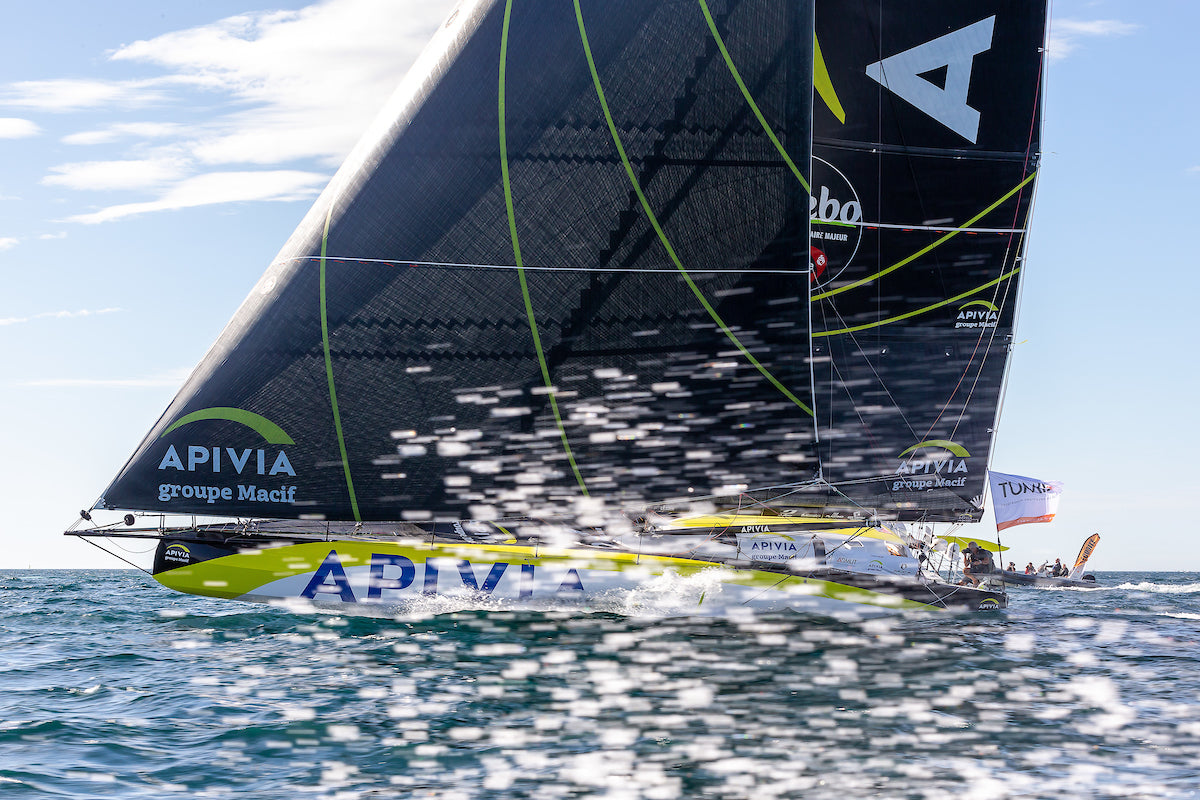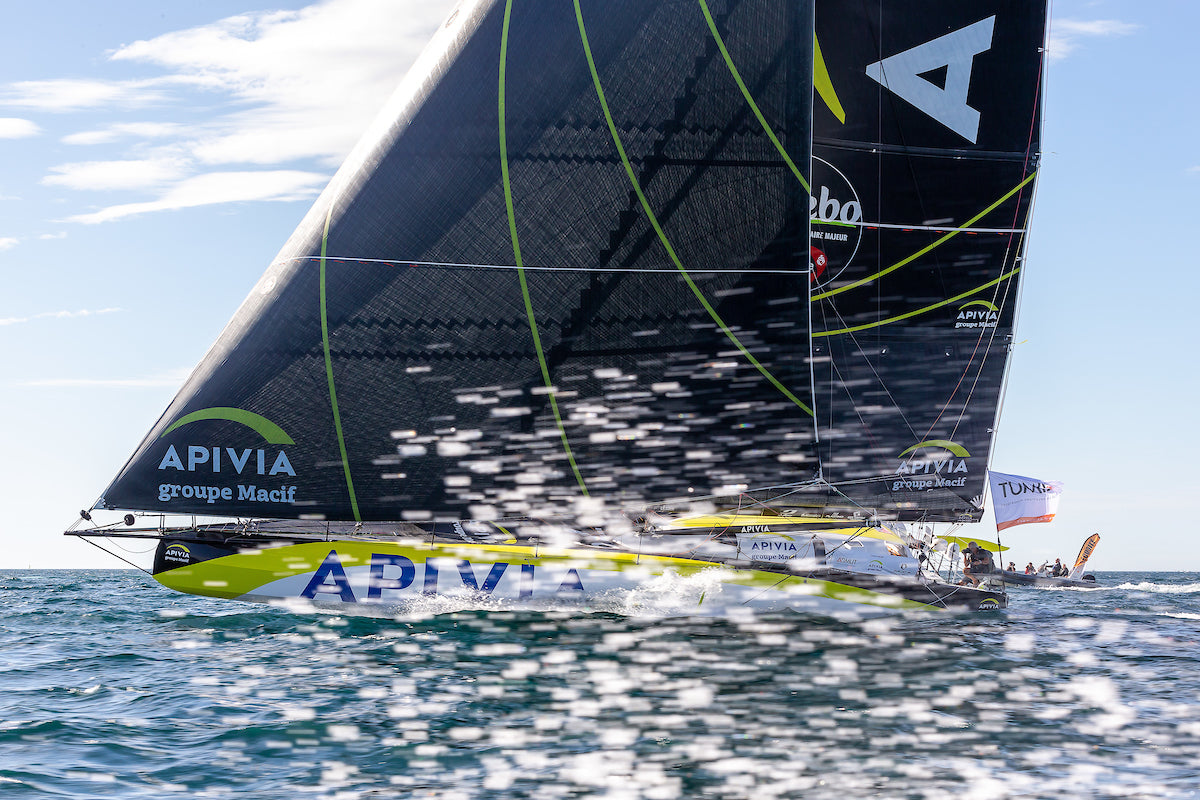CODE SAILS DEFINED
CODE SAILS DEFINED
What Is A Code Sail?
The term ‘Code Sail’ means different things to different sailors. What started out as an innovative and straightforward concept has rapidly evolved into a whole new category of sails. While Code Sails may look and perform quite differently from one another, there is one common theme: Code Sails are fast, flat, free-flying sails, designed for close reaching angles.
To understand all the different names and versions, it may help to look back at the origin of these sails. Originally “Code Zeros” were designed to qualify as spinnakers under various rating rules that require the mid-girth to be 75% of the foot length. Volvo Ocean Racers coined the term Code Zero, which fit into the established North Sails coding convention: A1, A2, A3, etc. This design also became popular among handicap racers under Rules like IRC, ORR, and PHRF. As their effectiveness and ease of use became increasingly apparent, Code Sails expanded into cruising as well, and multihull sailors coined the term “Screechers” for their similar, specialized, high-performance reaching sails.
Code Sails add a great deal of sail area and power for close reaching angles. Boats with non-overlapping headsails see the biggest benefit from Code Sails, as they better fill the inventory gap between upwind headsails and downwind spinnakers.
REQUEST A QUOTE CONTACT YOUR LOCAL EXPERT LEARN MORE ABOUT CODE SAILS
Helix Structured Luff: Code Sails Redefined
While Code Sail is a term used by sailmakers across the board, in recent years North Sails has redefined what it means to have a North Code Sail, with the introduction of its Helix Structured Luff technology.
A design philosophy first introduced for offshore Grand Prix, the performance benefits of Helix have reverberated around the sailing world, making Helix Code Sails the go-to tool for improving aerodynamics and increasing range.
View this post on Instagram
With their unique luff structures, Helix Code Sails give sailors another gear, increasing power potential by projecting the sail further forward and optimizing load sharing, for a positive sail shape and enhanced control. They are custom-designed – optimized to react to dynamic sailing loads, easily and efficiently handle torque for furling, and offer load-sharing characteristics suited to a much wider wind angle and wind speed range.
As of January 2022, Helix is now a feature of all North Racing Code Sails. The exact implementation of the Helix Structure varies according to the specific version of Code Sail. When purchasing a Code Sail, your boat’s performance, target wind angles and anticipated wind speeds, your onboard sail handling systems, and the sail material you have chosen are all taken into consideration. Then, the sail is designed around your specific needs.
Helix Code Sails and Mid-Girth Measurements
Note: Some rating/handicap systems strictly limit the available mid-girth specifications of rule-eligible sails, barring sails with mid-girths greater than a headsail’s 50%/less than a spinnaker’s 75% . Other rating systems heavily penalize mid-girths greater than 50%/less than 75%. And other systems attempt to generate accurate ratings with no special consideration given to mid-girths between 50 and 75. Discuss with your North Sails representative the rating system under which you will be racing to determine whether and which any rule restrictions or prohibitions apply.
Helix Code Zero Asymmetric Spinnaker – Mid Girth (SMG) >75%
For systems that disallow mid-girths between 50 and 75%, this sail remains much the same in concept as the original Code Zero. The design requirement is the flattest possible sail with a spinnaker mid-girth of 75%. The challenge of designing and building a Code Zero Asymmetric Spinnaker is meeting the 75% girth measurement while producing a sufficiently flat sail shape with no excess area”flapping” in the wind. Code Zeros carry an unsupported mid-girth sail area that is not aerodynamically efficient for light-air close reaching. Code Zeros can be made in 3Di Downwind or Code style aramid laminates.
Helix Code 50 – Mid Girth (SMG) <54%
North Sails’ newest code sail, the Code 50 is a free-flying sail for offshore racing. Ideally suited to ocean racing Grand Prix yachts such as IMOCAs and Ultime Trimarans, it uses a new 3Di Downwind (RAW) 700 material, uniquely suited to the hybrid requirements of offshore, free-flying sails – exceeding the limitations of standard 3Di Downwind 600, 700 & 800 material.

Helix Code 55 + 65 (SMG 51%-74%)
A Code 55 has a 55% SMG while a Code 65 features a 65% SMG. (SMG is the width of the sail measured at half the sail’s height, expressed as a percentage of foot length). Code Sails with mid-girth between 50% and 75% are highly efficient and versatile sails. However, as noted above, these sails are sometimes treated unfavorably (if not outright banned) by certain rating rules. Where allowed, these Code Sails provide pure reaching performance – ideal for offshore racing, multihull sailing, and performance cruising. A smaller SMG percentage implies a flatter sail for closer wind angles, while a higher SMG percentage implies a slightly fuller sail for wider wind angles. An SMG less than 51% is considered a genoa, while an SMG greater than 74% is considered a spinnaker.




























